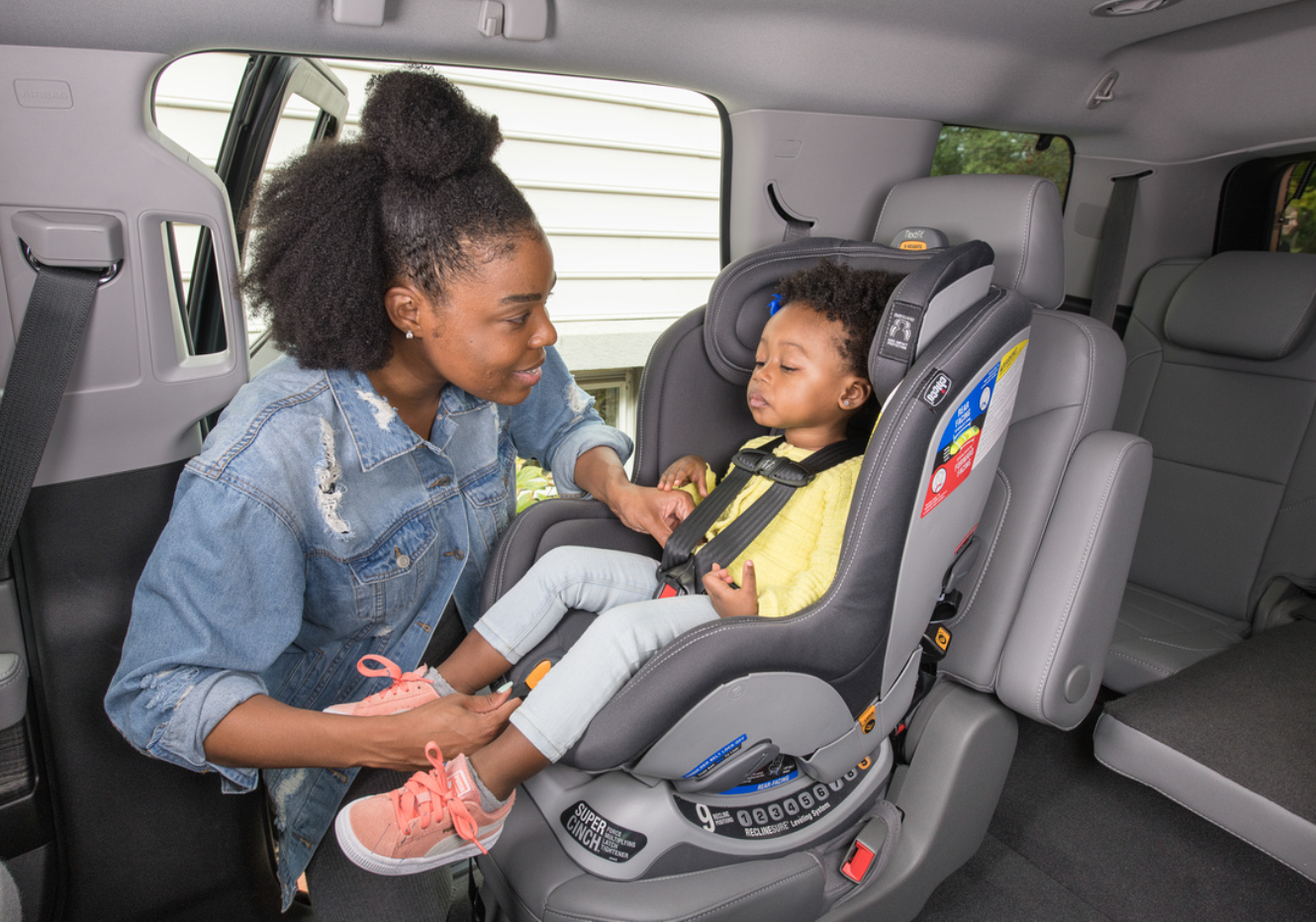
Access the archived recording
Access the archived webinar slides
Access resources shared by the presenters during the webinar
Access webinar registrant and attendee questions answered by the presenters after the webinar
Vehicle crashes are a leading cause of injury, hospitalization, and death for American children, making it a leading public health concern. According to the National Highway Traffic Safety Administration (NHTSA), in 2021, an average of 3 children aged 14 and under were killed and 445 were injured every day in traffic crashes, and of child passengers who died in a crash and for whom restraint use was known, 40% were not restrained or buckled up.1 Use of a child safety seat reduces the risk of injury for infants and toddlers by 71-82% compared with the use of seat belts alone.2,3 Booster seat use reduces the risk for serious injury by 45% for children ages 4-8,4 and seat belt use reduces the risk for death and serious injury by about half for car passengers ages 5 and older.5
In this webinar, Joe Colella, Director of Child Passenger Safety for the Juvenile Products Manufacturers Association (JPMA), helped attendees better understand what occurs during a crash and how proper restraint selection and use saves lives and reduces injuries. Throughout the presentation, he discussed the value of car seat education, child restraint engineering, occupant protection law enactment, active and visible law enforcement, and ongoing evidence in peer-reviewed literature.
Cassandra Herring, who leads Child Occupant Protection efforts for Safe Kids Worldwide, addressed community-based strategies for ensuring proper installation and use of car seats, including in-person and virtual inspections. Ms. Herring also presented Safe Kids Worldwide’s new strategic focus on equity in child safety, designed to identify and engage with families and communities that are at increased risk of preventable injury.
1. National Center for Statistics and Analysis. Traffic safety facts 2021 data: Children. National Highway Traffic Safety Administration. Accessed September 14, 2023. https://crashstats.nhtsa.dot.gov/Api/Public/ViewPublication/813456
2. Arbogast KB, Durbin DR, Cornejo RA, Kallan MJ, Winston FK. An evaluation of the effectiveness of forward-facing child restraint systems. Accid Anal Prev. 2004;36(4):585-589.
3. Zaloshnja E, Miller TR, Hendrie D. Effectiveness of child safety seats vs safety belts for children aged 2 to 3 years. Arch Pediatr Adolesc Med. 2007;161(1):65-68.
4. Arbogast KB, Jermakian JS, Kallan MJ, Durbin DR. Effectiveness of belt positioning booster seats: an updated assessment. Pediatrics. 2009;124(5):1281-1286.
5. National Center for Statistics and Analysis. Traffic safety facts 2021 data: Occupant protection in passenger vehicles. National Highway Traffic Safety Administration. Accessed September 14, 2023. https://crashstats.nhtsa.dot.gov/Api/Public/ViewPublication/813449
Speakers

Joe Colella is the Director of Child Passenger Safety for the Juvenile Products Manufacturers Association (JPMA). This role includes working with car seat manufacturer members toward safe regulations and standards, monitoring and providing input to state legislation, communicating safety messaging through media and other venues, and working closely with partners on collaborative projects. Joe has been a child safety advocate for three decades, regularly acting as a writer, presenter, instructor, and spokesperson.

Cassandra Herring manages Child Passenger Safety (CPS) programs as the coalition liaison for program and grant management. She provides field management for inspection stations and oversight for CPS-related projects in the Program Management Tool. Prior to joining Safe Kids Worldwide, Cass held CPS Technician Instructor, program management and tribal liaison roles at the Oklahoma Highway Safety Office, Safe Kids Oklahoma, and The Choctaw Nation of Oklahoma.
Moderator

Morag MacKay, MSc, is Chief Research and Network Officer for Safe Kids Worldwide. Her professional experience has largely focused on conducting and translating research to help move policy and programs towards evidence-based practices, finding ways to motivate those changes and developing tools to support them. Morag has worked in child injury prevention and control for more than 30 years. Her contributions to the field have been in the areas of injury surveillance, research, education, policy, program planning and evaluation. Prior to joining Safe Kids, Morag spent over a decade with the European Child Safety Alliance (ECSA), working with more than 30 countries across Europe to reduce child injuries. Prior to ECSA, Morag was Director of Plan-it Safe, the child and youth injury prevention center at the Children’s Hospital of Eastern Ontario in Ottawa, Canada. Morag is an active member of the Children’s Safety Now Alliance (CSN-A).